15
- 22nd of Jun. 2011 -
Boy, its been a while! Sorry for the large gap between posts, I swear I have good reasons…
Since January, I have been busy with graduating with a BA in Art History from Hunter College, establishing a new business with Yaron, my husband and partner, and forwarding most of my physical (and often also my mental) energy towards the creation of Peanut - our soon to be first child.
Being pregnant, I developed an interest in, well, how pregnant women are represented in art. To be honest, it all started in the fall semester, when I was working on a paper about Gustav Klimts loverly piece Hope II (MoMA) and came across some interesting pieces of information about the subject. It seems that while fertility and the female body, as artistic subjects, are very popular throughout art history, the pregnant body did not get as much attention. It is only in recent years that imagery of it started popping up more frequently.
In ancient art, the fertile female body, related to beliefs and worship, was a very popular subject. Even the not-artistically inclined among you are probably familiar with the Venus of Willendorf, a piece dating back to 24,000 BCE (and featured in even the most basic of art history lessons). Only 4 inches (11 cm) tall, this little lady is one of the worlds most familiar pieces of art thanks to her engorged fertile organs. She is, in every sense of the word, a symbol. She is not a representation of a woman but of her fertility. She could be pregnant, but that is clearly of lesser importance to her other attributions.
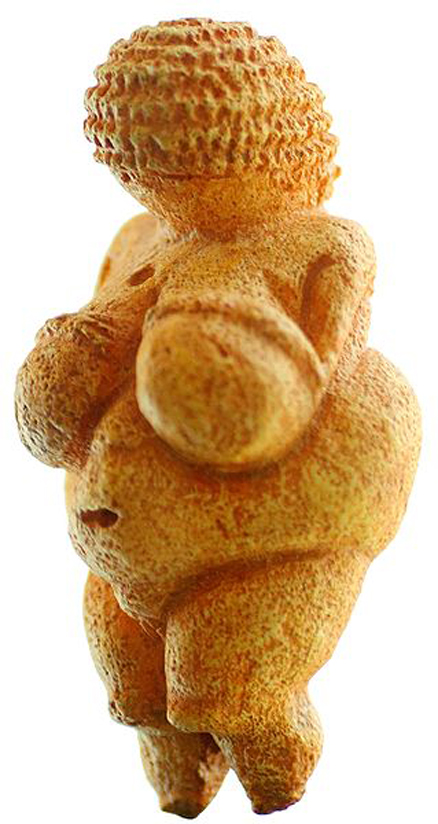
Venus of Willendorf, The Vienna Natural History Museum
Through the centuries, artistic representations of men took central stage, while those centering around the female body were treated as objects. The art world was dominated by male figures who, for one reason or another, created countless representations of women and their children but hardly any of women with child. Other than a single example of a portrait by Raphael, pregnant women are pretty much missing from Italian Renaissance.
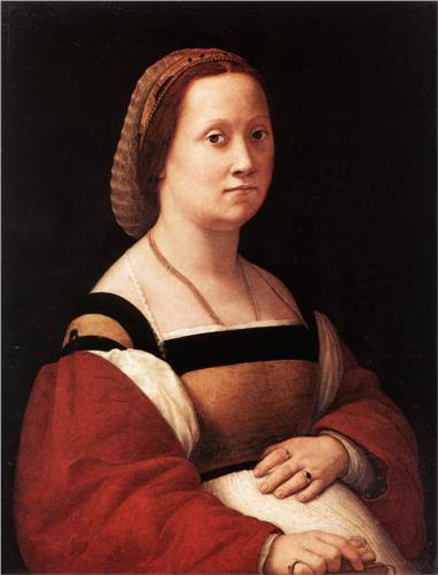
Raphael, La Dona Gravita , Galleria Palazzo Pitti, Florence
In Northern Renaissance, Dutch artist Vermeer, who was well known for his domestically natured portraits, created a painting titled Woman in Blue Reading a Letter, also a rare example from the period and area.
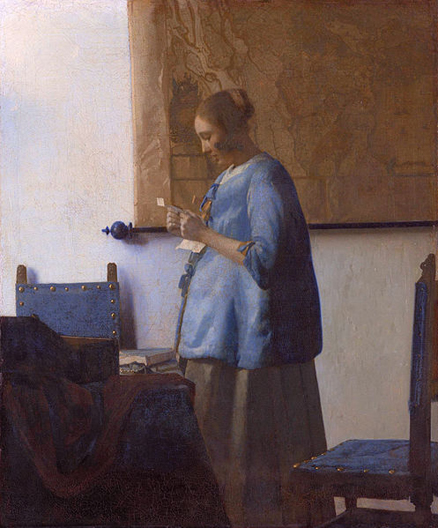
Vermeer, Woman in Blue Reading a Letter, Rijksmuseum, Amsterdam.
It was not until modernity that the image of a pregnant woman became a more familiar sight in the landscape of the art world. In my research of Hope II, I found that there is an immediate connection between the representation of a pregnant woman and Klimts interest in Art Nouveau styles. You see, Art Nouveau centers around the decorative and the feminine. It brings their domestic nature into the public sphere by representing them as art. Klimt, surrounded by and appreciative of women his whole life, gave them center stage in his artistic career as well, bringing the private into the public.
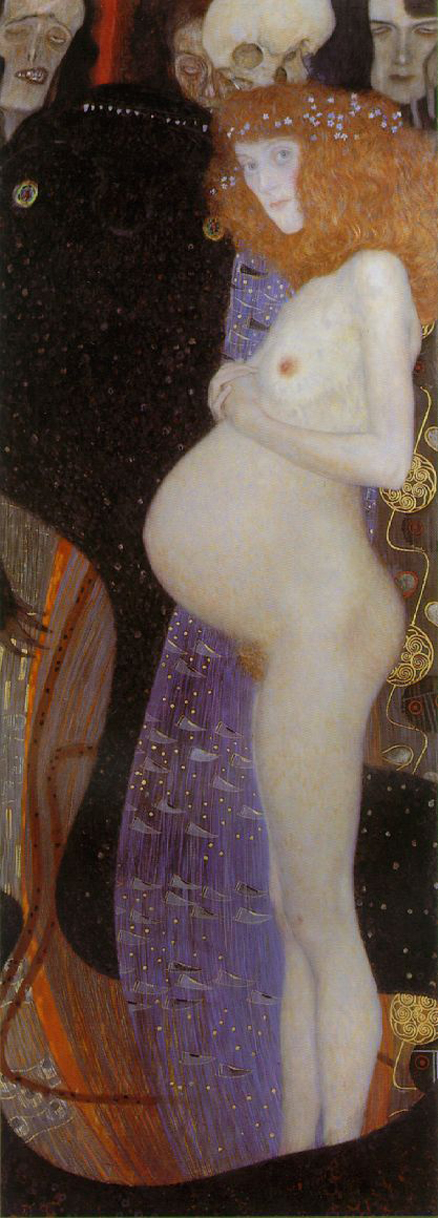
Klimt, Hope I, The National Gallery of Canada, Ottawa.
When it was first exhibited, Hope was considered highly controversial, due to its explicit nudity and the direct gaze of the model. Her belly jots out as she stands in profile, her fertility is unquestioned. Whenever I look at this piece, it makes me wonder about other representation of fertility - through engorged organs and portrayals of mother and child. Why were there hardly any representations of pregnant women? Is this not the very hight of ones fertility?
Klimts celebration of fertility wasnt long lived as his first child died in infancy. His fascination with the topic, however, did not suffer. Feeling the direct relationship between the slow formation of life and the swiftness of death, Klimt inserted his images of pregnancy with signs of death. These are visible in Hope as well as in Hope II, which he created a few years later.
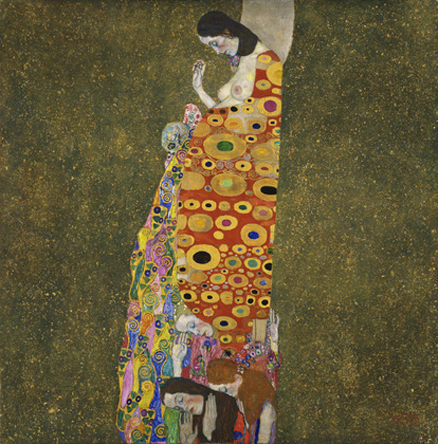
Klimt, Hope II, Museum of Modern Art, New York.
This image is chock full of meanings and symbolic elements. Being pregnant, in this case, is a condition that doesnt begin and end with a womans womb but envelopes the entire body and soul, surrounding ones entire being. It contains fear as well as hope and as we can see in the womans expression, creates a deep connection between a woman and her inner self.
Throughout modernity, which was very male-dominated in nature (the first half of the 20th century seems to have been all about masculinity and men desperately wanting to prove theirs), the female body was just as objectified as it has been in previous centuries, perhaps even more at times. In the art world, it was treated as a beautiful object, much like a landscape or a still life. Contemporary art, however, embraced ideas of feminism and the female body as a legitimate subject, rather than object. One artist who chose to explore the representation of the human body, is Ron Mueck.
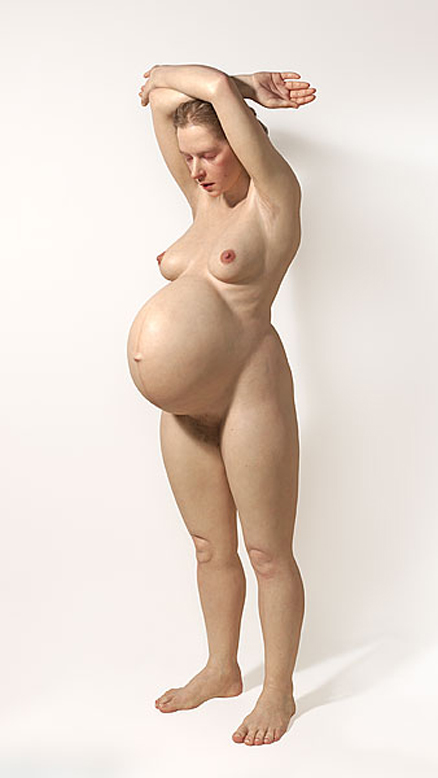
Ron Mueck, Pregnant Woman, National Gallery of Australia, Canbara.
A hyper-real figural sculptor, Mueck creates human bodies that are very real in their visuality, but at the same time step away from reality - they are always a smaller or larger than real life. This Pregnant Woman is feeling her pregnancy through every inch of her body, and casts it directly onto her viewer. Standing at 8 feet tall, with her eyes closed, she enables the viewer to circulate her and investigate the physicality of being pregnant. The inner connection that was established between herself, her body and her growing baby is as palpable as it is in Klimts Hope II, perhaps even more so due to her size and free-standing nature.
Looking at all the images above, they all seem to communicate more of motherhood than many of mother and child imagery I know. However, if I were to produce one convincing example of motherhood represented in a mother and child imagery, I would most probably use this one, also by Mueck.
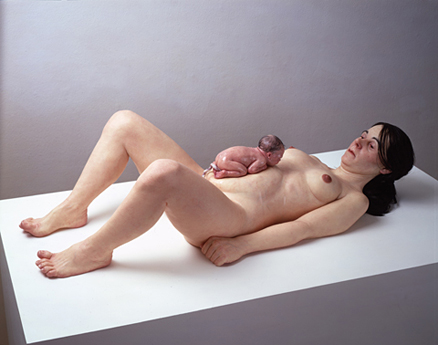
Ron Mueck, Mother and Child, Bayerische Staatsgemaeldesammlungen, Munich.
So what do you think? The world wants to know!
Wonderfully written and beautifully illustrated. Thank you.
asdasd